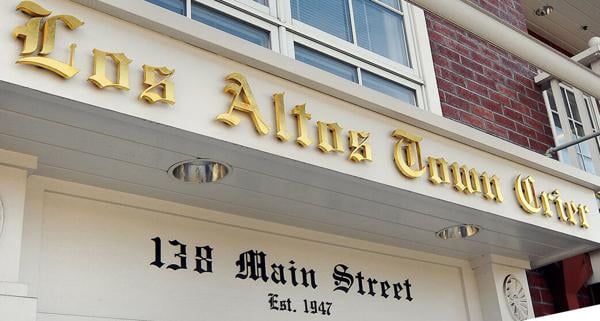Yes, it is a very good period to be in maritime transport. But Rolf Habben Jansen wants it to be known that it’s not all champagne wishes and caviar dreams as the CEO looks to Hapag-Lloyd’s year ahead.
Habben Jansen did not discuss Hapag-Lloyd’s stellar financial performance — earnings before interest, taxes, depreciation and amortization of $12.8 billion in 2021 — during a conference call with global media reporters. Instead, he devoted most of last week’s presentation to the headwinds facing the German carrier.
When will spot rates go down?
Habben Jansen never claimed to be a soothsayer, but the Hapag-Lloyd chief was repeatedly asked during the call to predict when freight rates would fall from dizzying levels.
“Spot rates are very high at the moment – still – and should stay high for some time due to strong demand. You also see this when you look at global container volumes,” Habben Jansen said. There just isn’t enough capacity available right now on a weekly basis to meet all the demand.”
He pointed out that exorbitant spot rates put pressure on carriers.
“It’s not just demand that’s been strong, but we’ve also seen that transportation spending has increased significantly,” Habben Jansen said. “On average, the ships you charter are probably four or five times more expensive than two years ago.
“When we look at the bunker, the bottom bunker was under $200 a ton. Right now we are stretching against the 700 mark,” he continued. “If you look at terminal storage and inland costs, where we’ve also seen a lot of capacity constraints, those have also risen sharply. … When we look at storage costs alone, that for Hapag-Lloyd was over $400 million more in 2021 than it was in 2020.”
In a nod to Hapag-Lloyd earnings, Habben Jansen said: “The strength of the market is certainly reflected in the preliminary figures we released last week.” But he noted that “the transport volume is largely stable. It’s very much related to congestion.
He was reminded that Hapag-Lloyd announced last year that it would freeze spot rates.
“We said we would freeze spot rates at least until the end of the year. We have also done so. We have seen a bit of movement in rates since the start of this year. To be honest, in some areas things have gotten a bit worse. In some non-dominant legs we have followed the market. But we remain very cautious in terms of adjusting these rates,” said Habben Jansen.
“We need traffic jams to relieve”
Tariffs will not drop until port congestion in China, Europe and the United States eases.
“In all honesty, we need congestion to alleviate. This will further contribute to a normalization of the market,” said Habben Jansen, noting that operational challenges, including port waiting times and dockside stays, “are still quite severe.”
Add to that a drop in terminal productivity, strained rail links and a lack of truckers, said Habben Jansen, and one can see that ports around the world are still in a mess.
The same goes for ETAs.
When will the ship dock?
“Schedule reliability is still at a poor level across the industry,” said Habben Jansen. “We set ourselves the goal of moving up those rankings and we did. The problem is that it still doesn’t help the customer that much because the industry average is so down. … We have to do better and our peers are doing the same to let our customers know what’s going on, but the reality is that it will take some time before schedule reliability returns to the levels we’ve seen before.
He said Hapag-Lloyd had taken a number of steps to mitigate the impact on customers.
“We ordered quite a few extra boxes. Today, we operate a fleet of approximately 3 million TEUs in box capacity, compared to 2.5 million previously. We thought that with those 3 million we would be moving more or less the same number of containers as with the 2.5 million, which illustrates how much congestion there really is.
“Of course, we moved the capacity to where it was most needed. We tried to do everything we could to reroute the cargo. We have ordered new ships. We have also opened new offices, increased our staff and increased our IT capabilities,” continued Habben Jansen.
“The tight supply chain will remain an issue as demand is also strong. We are also seeing serious backlogs in several industries. The rating boards will likely remain high for some time. The only thing we can to do at this stage is to take as many countermeasures as possible to minimize the impact on our customers.
“The key question always comes up: ‘When do you think the market will relax?’ I’m still cautiously optimistic that we will see some market easing over the course of 2022, the main logic behind this being that once we get past the current omicron wave of COVID, most people should be able to return to work . And once the workforce is available again, as it was before in the terminals and also in the indoor sites, we will start to see less congestion,” said Habben Jansen.
He challenged any notion that shipping lines are reducing capacity to keep rates high.
“All we have are sails. Every box we have, we try to move it. Every ship we have, we try to navigate. And we try to do everything we can to secure more ships, even if it is sometimes very, very expensive. We are certainly not holding anything back,” said Habben Jansen.
With the containers purchased in 2021, Hapag-Lloyd now has what Habben Jansen called a “20% buffer”.
“I certainly hope we don’t have to buy as many boxes this year as we did last year because gear towers have already come down to a level we haven’t seen in a long, long time. I don’t expect us to have to invest a lot in new containers these days – and the same goes for many of our competitors – because there’s actually quite a bit of buffer in the global fleet already. I mean, normally the amount of cargo we move today, we would need about 2.5 million TEUs of container capacity. Today we have 3.05 [million], I think. So we already have a 20% buffer in the system, and I don’t think we need more than that,” he said.

In the same boat
Although it does not invest in containers, Hapag-Lloyd, like other major shipping companies, needs new ships.
“If we step back and look at supply and demand and the market, we see that the backlog has definitely increased, currently around 22% [as a share of the world’s fleet]. The inactive fleet is almost nil. Scrapping is also very, very low. Today almost all of our vessels are in use and fully utilized,” said Habben Jansen. “We also have a good number of ships on order, which will start to relieve next year.”
Hapag-Lloyd has ordered 10 13,000 TEU vessels, of which five will buy and five will charter. The first of the new builds will be delivered by the end of this year, with the rest coming in 2023.
Stay in your navigation lane
Don’t expect Hapag-Lloyd to announce that it has bought a Pilot Freight Services like Maersk or started an airfreight division like CMA CGM. The shipping carrier sticks to what it knows.
“If you look at air freight transport, it’s something that’s reasonably distant from container transport and we don’t have that expertise either. First of all, we have always said that we do not go into sea freight transport and therefore also into air freight”, said Habben Jansen, adding that “operating an airline is not not something we would see as a logical extension of who we are. To do.”
He thinks it’s too early to determine if air freight is worth the investment.
“If you look at the size of air cargo operations that some of the carriers have with four, six or 10 freighters, that doesn’t automatically make you a large global cargo carrier. And as such, we remain skeptical. They may be right. I’m not saying their strategy isn’t valid. We chose not to go into it. We are certainly not the subject matter experts, and many of our customers will submit their air and ocean freight separately and make the choices they can,” he said.
Hapag-Lloyd is unlikely to jump into the M&A fray in any sector anytime soon.
“A lot of the prizes that people are looking for are sort of ridiculous. I am convinced that buying expensive assets is not a good long-term strategy,” said Habben Jansen. “If we see a good opportunity we will do something, but if we don’t see that we won’t have to spend the money.”
Maritime reform
Habben Jansen said that in addition to air cargo, he was not an expert on the shipping reform bill introduced in the Senate earlier this month and could not comment in detail on efforts to limit carrier detention and demurrage charges, but “looking at these additional charges and trying to see if we can find better ways to do it isn’t necessarily wrong.
However, he reiterated that Hapag-Lloyd has also seen its costs rise dramatically and that in the United States alone the storage fees it paid at terminals last year rose by around 400 million. dollars compared to 2020.
“We are facing tens of millions of dollars in additional costs every month because of these types of fees that we incur.”
Hapag-Lloyd and CMA CGM “temporarily” remove 2 services from Savannah
Hapag-Lloyd CEO: ‘We’re probably at the peak of the problems’
Hapag-Lloyd orders another 6 vessels of 23,500 TEUs at a cost of $852 million
Click here for more articles on American Shipper/FreightWaves by Editor-in-Chief Kim Link-Wills.




